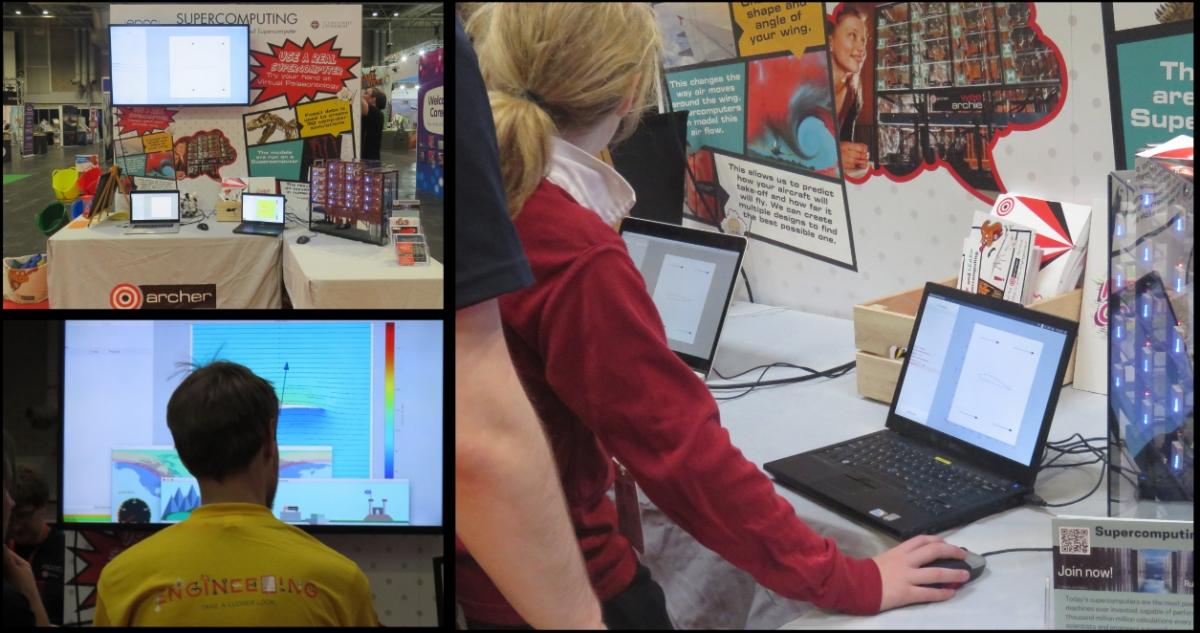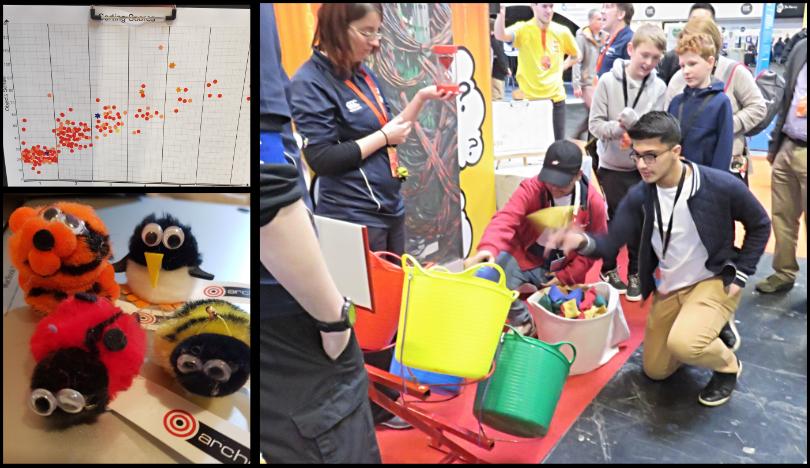Big Bang Fair 2018: a success!
31 March 2018
For the third year running a group of us from EPCC attended the Big Bang Fair (BBF) at the NEC in Birmingham through the ARCHER Outreach programme. BBF provides an excellent opportunity to show a wide range of young people what supercomputing is about and encourage them to adopt careers in STEM-based subjects.
We are writing our activities up to encourage others to try doing supercomputing outreach and show that you do not need fancy equipment. For more information see the ARCHER's Ambassador pack or GitHub where we develop these. We encourage you to feedback or collaborate with us.
Design an aeroplane wing
Our booth included Wee Archie, our Raspberry Pi-based mini supercomputer, which ran our 'design an aeroplane wing' demo. Participants change the angle of attack of the wing relative to the direction of travel, the wing's camber (shape) and its thickness. The lift that would be generated can be calculated from these three parameters. The simulation is run on Wee Archie, whose LEDs are coupled to the actual load run on the four cores on a Raspberry Pi. This results in Wee Archie lighting up like a Christmas tree – you just can't have a supercomputer without flashing lights (take note, manufacturers). A simulation then shows whether the wing design would generate enough lift for an aircraft to take off and how far it could travel from Edinburgh Airport.

Run a supercomputing centre
The Supercomputing app (try it out for yourself) allows participants to run a computing centre, buying hardware to run jobs that earn revenue. You can then upgrade existing hardware, buy additional nodes or deal with eventualities like node failures that will cost you cash to repair. At BBF this year, participants were rewarded with 'money' that had a computer personage of historical interest on one side while the other side allowed them to record their name and score. This proved to be popular.
Explore parallel working
The beanbag sorting activity (my favourite) comprises one or more people sorting by colour as many beanbags as they can in 30 seconds. Usually one person tries it alone first before others join in to see whether more can be done with people working in parallel. Usually it can, however contention increases as more people join in. A bunch of kids kept returning to the beanbag sorting until they had achieved the highest score for every category for that day. One of them said: "This is the best activity at the Big Bang Fair because it is the only competitive one!"

See what ARCHER is made of
For this BBF, Cray loaned an XC30 blade (used in ARCHER) and we added life-size images of both sides of an ARCHER cabinet to our booth. These showed all the blades in place at one end and the cabling required to power and interconnect them at the other. We could thus talk about how the blade related to an ARCHER cabinet and how this serves the UK's supercomputing needs.
Our booth therefore gave a complete picture of supercomputing, with a demonstration of the benefits of parallelism, a model of a supercomputer, a simulation of a computing centre, and the hardware and life-size images of ARCHER. We estimate that we reached about ten thousand people over the four days of BBF. We hope that we may have inspired some of them to get involved in STEM-based subjects and maybe in future they might even apply to work at EPCC.
